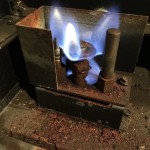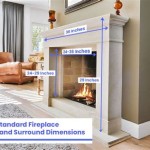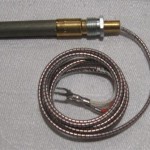How To Paint a Brass Fireplace Insert Black
A brass fireplace insert, while once a popular design choice, can become dated and clash with contemporary interior styles. Painting the brass insert black offers a cost-effective method for updating the fireplace's appearance and creating a more modern aesthetic. The process requires careful preparation, appropriate materials, and precise application techniques to ensure a durable and visually appealing finish. This article provides a comprehensive guide on how to properly paint a brass fireplace insert black, outlining each step from preparation to final application.
It is crucial to understand the challenges associated with painting brass. Brass is a non-ferrous metal known for its smooth surface and resistance to corrosion. These properties, while beneficial for its longevity, can hinder paint adhesion. Proper preparation is therefore paramount to ensure the paint adheres correctly and prevents peeling or chipping over time. Neglecting these steps can lead to a substandard finish and the eventual need for re-painting.
Safety is another critical factor when working with paint and especially when dealing with a fireplace. Always work in a well-ventilated area and wear appropriate protective gear, including a respirator mask, gloves, and eye protection. The fireplace should be completely cool before beginning any work and the surrounding area should be adequately protected from paint splatters.
Key Point 1: Preparation is Paramount
The success of any paint job lies heavily on the preparation phase. This involves cleaning, degreasing, sanding, and priming the brass surface to create an ideal foundation for the paint to adhere to. Skipping or shortcutting any of these steps will likely result in a compromised finish.
The first step involves thoroughly cleaning the brass insert. Over time, brass can accumulate dust, grime, and soot, especially within a fireplace setting. Use a degreasing cleaner specifically designed for metal surfaces. Apply the cleaner according to the manufacturer's instructions and scrub the entire surface of the brass insert with a non-abrasive pad or cloth. Rinse thoroughly with clean water and allow the surface to dry completely. Avoid using harsh chemicals that could damage the brass or leave behind a residue that will interfere with paint adhesion.
Once the surface is clean and dry, it's time to roughen it up through sanding. This process creates a mechanical key for the primer and paint to grip onto. Use a fine-grit sandpaper, such as 220-grit or 320-grit, to lightly sand the entire surface of the brass insert. Apply even pressure and avoid sanding too aggressively, as this could scratch the brass. The goal is to create a slightly textured surface without removing excessive material. After sanding, remove all sanding dust with a tack cloth or a clean, damp cloth. Ensure the surface is completely free of dust particles before proceeding to the next step.
Priming is a crucial step when painting brass. Primer acts as an intermediary layer between the brass and the paint, improving adhesion and preventing the paint from chipping or peeling. Choose a high-quality metal primer specifically designed for non-ferrous metals. It's beneficial to use a self-etching primer, which contains an acid component that etches the metal surface, further enhancing adhesion. Apply the primer in thin, even coats using a brush or spray can, following the manufacturer's instructions. Allow the primer to dry completely before proceeding to the painting stage. Multiple thin coats of primer are preferable to one thick coat, as this reduces the risk of drips and uneven coverage.
Key Point 2: Selecting the Right Paint and Applying it Correctly
Choosing the correct type of paint is critical for achieving a durable and aesthetically pleasing finish on a brass fireplace insert. Not all paints are created equal, and the specific demands of a fireplace environment necessitate a heat-resistant and durable product. Furthermore, the application technique significantly impacts the final outcome. A proper application ensures even coverage, prevents imperfections, and maximizes the paint's longevity.
For painting a brass fireplace insert, a high-heat-resistant paint is essential. Ordinary paints will not withstand the high temperatures generated by a fireplace and will likely crack, peel, or discolor. Specifically look for paints labeled as "high-heat" or "stove paint." These paints are designed to withstand temperatures up to several hundred degrees Fahrenheit. Options include high-heat spray paints and brush-on enamel paints formulated for high-temperature applications. Spray paint typically provides a smoother and more even finish, while brush-on paint may offer better control in tight or intricate areas.
When using spray paint, ensure good ventilation and wear a respirator mask. Apply the paint in thin, even coats, holding the can approximately 10-12 inches from the surface. Overlapping each pass slightly prevents streaking and ensures consistent coverage. Multiple thin coats are always better than one thick coat. Allow each coat to dry completely before applying the next. If using brush-on paint, choose a high-quality brush and apply the paint in smooth, even strokes, following the direction of the grain (if any). Avoid applying too much paint at once, as this can lead to drips and runs. Sand lightly between coats with fine-grit sandpaper to remove any imperfections and create a smoother surface for the next coat.
The number of coats of paint required will depend on the type of paint and the desired finish. Typically, two to three coats of paint are sufficient to achieve full coverage and a durable finish. Regardless of the number of coats, always allow each coat to dry completely before applying the next. Rushing the drying process can lead to a soft or tacky finish that is prone to damage.
Post-painting, allow the paint to cure fully according to the manufacturer’s instructions. Curing refers to the process by which the paint hardens and achieves its maximum durability. This process can take several days or even weeks, depending on the paint type and environmental conditions. Avoid using the fireplace during the curing period to prevent damage to the freshly painted surface.
Key Point 3: Addressing Potential Problems and Maintaining the Finish
Even with meticulous preparation and careful application, issues can arise during the painting process. Recognizing and addressing these problems promptly is crucial for achieving a professional-looking finish. Furthermore, maintaining the painted surface is essential for prolonging its lifespan and preserving its aesthetic appeal.
One common issue is paint drips or runs. These occur when too much paint is applied in one area, causing it to sag and run down the surface. If you notice drips or runs while the paint is still wet, immediately use a clean brush or cloth to smooth them out. If the paint has already dried, use fine-grit sandpaper to lightly sand down the drips or runs until they are flush with the surrounding surface. Then, apply a thin coat of paint to the affected area to blend it in.
Another potential problem is uneven coverage. This can occur if the paint is not applied evenly or if the surface is not properly primed. To fix uneven coverage, apply another thin coat of paint to the entire surface, paying particular attention to the areas that are thinly covered. Ensure that each coat is applied evenly and that the paint is allowed to dry completely before applying the next coat.
Paint peeling or chipping is a sign of inadequate preparation or improper paint selection. If the paint starts to peel or chip, it is necessary to remove the loose paint and re-prepare the surface before re-painting. Use a scraper or sandpaper to remove all loose paint and then re-prime the surface with a metal primer. Once the primer is dry, re-apply the high-heat-resistant paint in thin, even coats.
Maintaining the painted fireplace insert involves regular cleaning and occasional touch-ups. Clean the surface regularly with a soft cloth and a mild detergent. Avoid using abrasive cleaners or harsh chemicals, as these can damage the paint. If scratches or chips occur, touch them up with a small amount of high-heat-resistant paint. Apply the touch-up paint with a small brush, feathering the edges to blend it in with the surrounding surface.
Consistent maintenance and proper cleaning techniques are essential in prolonging the paint's lifespan. Regular upkeep will ensure the fireplace insert maintains its updated and aesthetically pleasing appearance.
By following these steps and taking the necessary precautions, one can successfully paint a brass fireplace insert black, transforming its appearance and revitalizing the focal point of the room. A well-executed paint job not only enhances the aesthetic appeal but also protects the underlying brass from further wear and tear. The result is a modern and sophisticated fireplace that complements any interior design style.

How To Spray Paint A Brass Fireplace Insert Erfly House

How To Spray Paint A Brass Fireplace Insert Erfly House

How To Spray Paint A Brass Fireplace Insert Erfly House

Brass Painting S Instructions A Fireplace Black

Fireplace Makeover Spray Paint Magic

How To Update Brass Fireplace Insert With Spray Paint Iekel Road Home

How To Paint Metal Fireplace Surround Four Generations One Roof

How To Spray Paint A Brass Fireplace Insert Erfly House

How To Spray Paint A Brass Fireplace Insert Erfly House

Easily Update Your Brass Fireplace Within The Grove
Related Posts








